Last updated on February 15, 2024

Commander's Sphere | Illustration by Ryan Alexander Lee
The unfortunate truth about Magic is that how fun a deck is and how much money it costs seem to have a direct relationship, at least to a certain point. Sure, you don’t have to win to have fun, but you’re also going to have more fun if your deck can actually do something before you lose. If you’re stuck playing your fourth tapped dual land and have a single common creature on the field while your opponents already have their game plan online, you’re probably going to feel like the game is going to end without you participating in it much.
Luckily, spending more money on a deck isn’t the only solution to this problem. While certain builds might require a baseline amount of money to start being fun, there are plenty of other strategies that can work well on a tighter budget. Knowing which commanders and play styles lend themselves to a lower budget is important for knowing how to build a cheaper deck.
For this list, you’re going to see several mono-color and 2-color decks. While these can sometimes provide less flexibility in deck building, they’ll also save you money on a land base. It’s also possible to play multicolor decks on a budget, but it means putting up with some slower mana options. A lot of these decks can also be upgraded, so if you really enjoy one and want to keep building it up, this is a good starting place to test it out.
What Are Fun Budget Commander Decks in MTG?
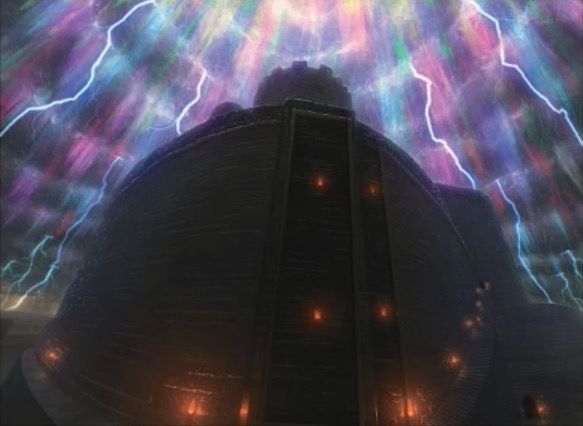
Command Tower | Illustration by Muhammad Firdaus
Fun budget Commander decks are decks that won’t cost you too much money but can still pull off fun moves. These decks can stand their own in most casual playgroups, so you won’t feel like your lower budget is holding you back from being a part of the game.
I’m considering a budget deck to be any deck less than $100, including basic lands. While this might seem like a lot, it’s only an average of one dollar per card in Commander. It’s worth double checking the decklist on a site like MTG Goldfish since prices are always changing.
Honorable Mention: Proxy Any Deck You Want
Before I get into any specific decks, I think it’s worth remembering that Magic is a game. If you’re just playing for fun and not in a sanctioned tournament, remember you can always make proxies for whatever deck you want to play. If there are a few expensive cards holding you back from playing a deck you really want, just talk to your playgroup and see if they’re okay with you simply using a stand-in while you save up. There are also free programs like Cockatrice and Xmage where you can play Commander for free using any card you want.
You shouldn’t have to feel excluded from having fun playing Magic just because you can’t drop a few hundred dollars on a deck. That said, if you aren’t comfortable using proxies or you want to play somewhere that doesn’t allow them, these decks are a good alternative!
#10. Imodane, the Pyrohammer
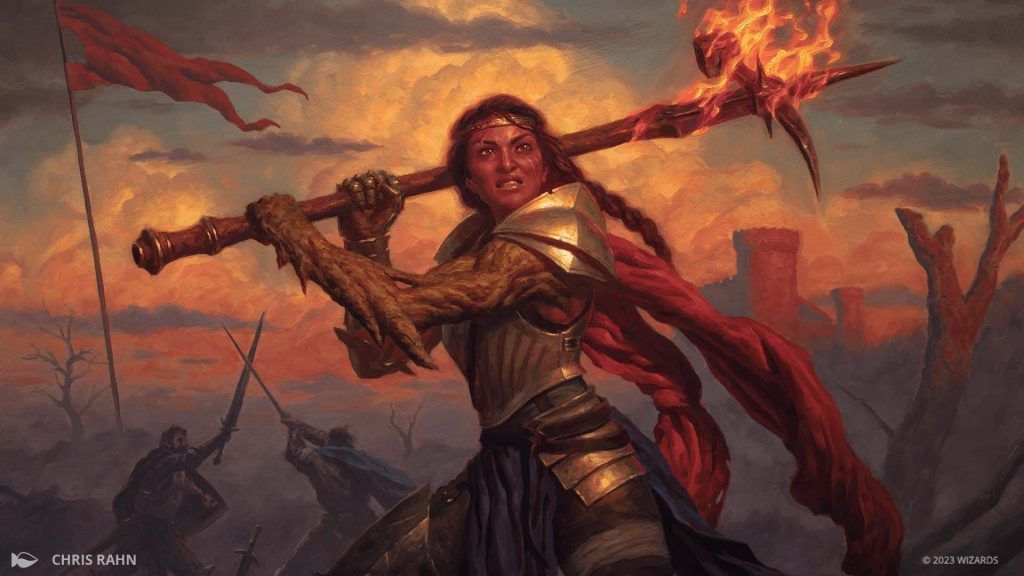
Imodane, the Pyrohammer | Illustration by Chris Rahn
Commander (1)
Planeswalker (1)
Creature (14)
Brash Taunter
Chandra's Incinerator
Electrostatic Field
Fire Servant
Firebrand Archer
Guttersnipe
Kessig Flamebreather
Runaway Steam-Kin
Solphim, Mayhem Dominus
Storm-Kiln Artist
Stuffy Doll
Torbran, Thane of Red Fell
Young Pyromancer
Toralf, God of Fury
Instant (21)
Abrade
Big Score
Blitz of the Thunder-Raptor
Cathartic Pyre
Chaos Warp
Demon Bolt
Electrodominance
Fire Prophecy
Frantic Firebolt
Invoke Calamity
Lightning Axe
Lightning Bolt
Lightning Strike
Mine Collapse
Reverberate
Seismic Strike
Stonesplitter Bolt
Thrill of Possibility
Virtue of Courage
Volcanic Spite
Witchstalker Frenzy
Sorcery (16)
Banefire
Blasphemous Act
Chain Lightning
Faithless Looting
Flame Slash
Grapeshot
Insult / Injury
Mana Geyser
Meteor Swarm
Mizzium Mortars
Nahiri's Warcrafting
Purphoros's Intervention
Roast
Shivan Meteor
Spitting Earth
Witch's Mark
Enchantment (4)
City on Fire
Dictate of the Twin Gods
Double Vision
Fiery Inscription
Artifact (8)
Arcane Signet
Fellwar Stone
Mind Stone
Pyromancer's Goggles
Sol Ring
Swiftfoot Boots
Wayfarer's Bauble
Fire Diamond
Land (35)
Imodane, the Pyrohammer is a good deck to start with because it embodies everything I think makes a great fun budget commander. Imodane is mono-red, which is a color I think is easy to have fun with on a low budget. You have some removal, you have forms of card draw, and you even have a bit of ramp with cards like Big Score that can make Treasures.
Imodane can make a specific group of cards that might not otherwise be competitive much more powerful, in this case direct damage spells. While Lightning Axe is an okay card as it is, when it’s suddenly dealing 20 total damage instead of 5 for 1 mana, it becomes a lot more effective. Imodane takes a $0.75 card like Banefire and turns it into a potential game winner.
While City on Fire and Solphim, Mayhem Dominus start to creep up a bit in price, it isn’t a huge deal since this deck runs plenty of cards worth less than a dollar. You also have an incredibly cheap mana base since you’re mostly running basic Mountains.
This may actually be my personal favorite on the list, but I’ll admit to being a bit biased as a big mono-red fan.
#9. Eriette of the Charmed Apple
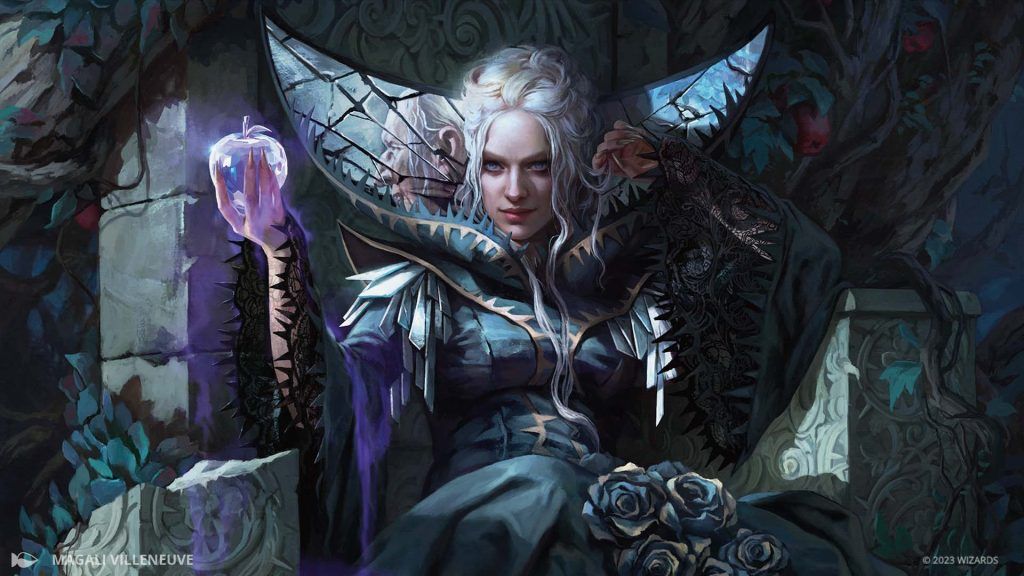
Eriette of the Charmed Apple | Illustration by Magali Villeneuve
Commander (1)
Creature (18)
Archon of Sun's Grace
Archon of the Wild Rose
Cursed Courtier
Doomwake Giant
Grim Guardian
Hateful Eidolon
Heliod's Pilgrim
Killian, Ink Duelist
Kor Spiritdancer
Light-Paws, Emperor's Voice
Loyal Warhound
Lurrus of the Dream-Den
Mesa Enchantress
Solemn Simulacrum
Spellbook Vendor
Sram, Senior Edificer
Transcendent Envoy
Underworld Coinsmith
Instant (5)
Generous Gift
Hagra Mauling
Utter End
Path to Exile
Swords to Plowshares
Sorcery (2)
Enchantment (34)
A Tale for the Ages
All That Glitters
Angelic Gift
Benevolent Blessing
Chains of Custody
Cooped Up
Darksteel Mutation
Edge of the Divinity
Ethereal Armor
Ghoulish Impetus
Gift of Immortality
Hyena Umbra
Kaya's Ghostform
Light of Promise
Lithoform Blight
Martial Impetus
Minion's Return
Nurgle's Rot
Ossification
Parasitic Impetus
Pentarch Ward
Planar Disruption
Reprobation
Rune of Mortality
Rune of Sustenance
Sage's Reverie
Sigil of the Empty Throne
Spirit Link
Spirit Mantle
Swift Reconfiguration
Timely Ward
Twisted Embrace
Underworld Connections
Unquestioned Authority
Artifact (4)
Arcane Signet
Mind Stone
Sol Ring
Talisman of Hierarchy
Land (36)
Bojuka Bog
Brightclimb Pathway
Castle Locthwain
Caves of Koilos
Command Tower
Concealed Courtyard
Evolving Wilds
Exotic Orchard
Fabled Passage
Fetid Heath
Hall of Heliod's Generosity
Isolated Chapel
Orzhov Basilica
Plains x13
Swamp x8
Temple of Silence
Terramorphic Expanse
Similar to Imodane, Eriette of the Charmed Apple can make a specific category of cheap cards a lot more powerful, in this case auras. While there are some auras that are a bit more expensive, there are lots of good ones that fit into a deck on a tighter budget. Eriette’s abilities also allow these cards to be a bit more versatile.
A card like All That Glitters is typically just a buff for you, although a significant one to be fair. However, if you put it on one of your opponents’ creatures instead, now you’ve created a massive creature that can only attack your opponents, but a threat that at least one of them will want to keep around. If your other opponents remove the creature, it’s not a huge loss because you’re still taking an opponent’s threat off the board.
Auras like Ossification also work well in this deck because they help to fuel Eriette’s second ability while being more difficult to remove. There’s likely going to be a lot more creature removal at a given table than land destruction, so your opponents need cards that specifically destroy enchantments to get rid of cards like Lithoform Blight or Underworld Connections.
This deck is a lot of fun but is lower on the list because its cost is starting to creep towards the higher end of what I’d consider a “budget” deck. There are some cuts you can probably make to help its cost go down if you need it to be more budget friendly, like Hall of Heliod's Generosity or Ghoulish Impetus.
#8. Muldrotha, the Gravetide
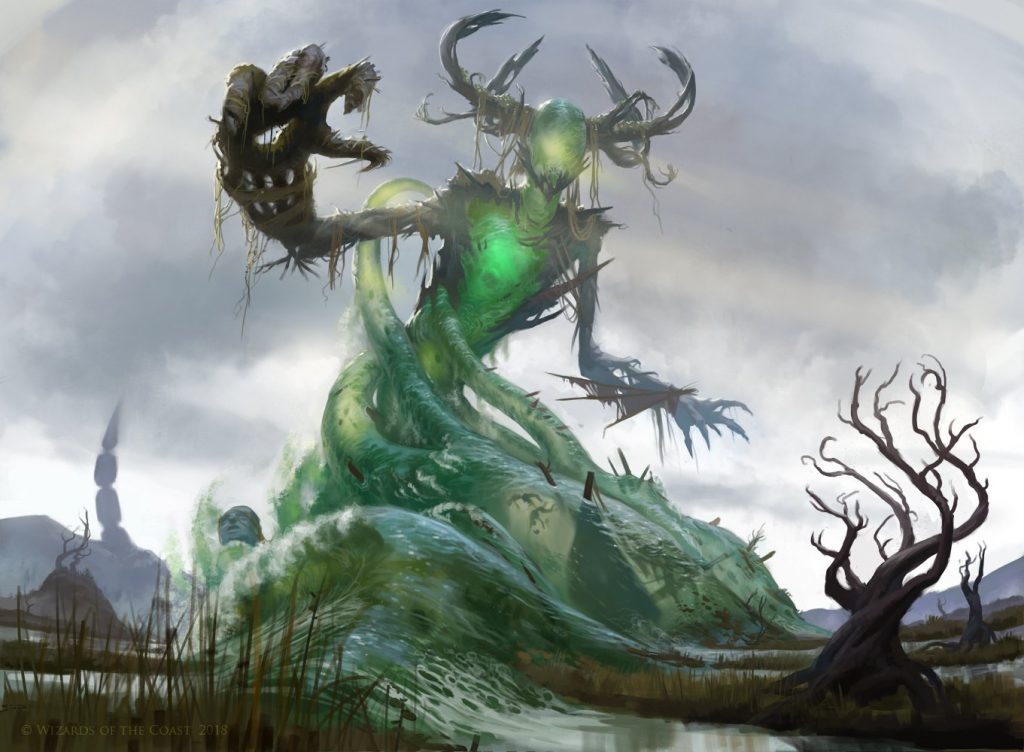
Muldrotha, the Gravetide | Illustration by Jason Rainville
Commander (1)
Creature (32)
Bane of the Living
Burnished Hart
Butcher of Malakir
Caustic Caterpillar
Coiling Oracle
Corpse Connoisseur
Dawntreader Elk
Diligent Farmhand
Dreamborn Muse
Elvish Rejuvenator
Farhaven Elf
Fertilid
Fleshbag Marauder
Forgotten Creation
Magus of the Abyss
Merciless Executioner
Mirror-Mad Phantasm
Night Incarnate
Nyx Weaver
Sakura-Tribe Elder
Satyr Wayfinder
Sidisi's Faithful
Slum Reaper
Splinterfright
Stitcher's Supplier
Tatyova, Benthic Druid
Tidespout Tyrant
Woebringer Demon
Wood Elves
World Shaper
Yavimaya Granger
The Gitrog Monster
Sorcery (1)
Enchantment (21)
Attunement
Carapace
Chronic Flooding
Crawling Sensation
Demonic Vigor
Font of Fertility
Hesitation
Khalni Heart Expedition
No Rest for the Wicked
Pernicious Deed
Phyrexian Scriptures
Seal of Doom
Seal of Primordium
Seal of Removal
Secrets of the Dead
Skeletal Grimace
Sultai Ascendancy
The Eldest Reborn
Thrull Retainer
Time of Ice
Vessel of Nascency
Artifact (9)
Aether Spellbomb
Executioner's Capsule
Medicine Bag
Nevinyrral's Disk
Perpetual Timepiece
Plague Boiler
Possessed Portal
Voyager Staff
Wayfarer's Bauble
Land (36)
Bant Panorama
Blighted Woodland
Dismal Backwater
Esper Panorama
Evolving Wilds
Forest x7
Foul Orchard
Golgari Guildgate
Grixis Panorama
Island x3
Jund Panorama
Jungle Hollow
Jwar Isle Refuge
Myriad Landscape
Opulent Palace
Swamp x8
Terminal Moraine
Terramorphic Expanse
Thornwood Falls
Warped Landscape
Woodland Stream
Muldrotha, the Gravetide is a very versatile commander. Being able to cast cards from your graveyard can be used well with dredge or other self-mill mechanics, aristocrats, and sacrifice mechanics. It can also just help keep any strategy consistent, since it’s harder to permanently remove your cards from the game.
This deck makes use of cards like Aether Spellbomb and Executioner's Capsule which can be sacrificed for additional benefits. Thanks to Muldrotha, you’ll be able to use these effects multiple times. In a higher budget Muldrotha deck, this would also mean running fetch lands, but here I’ve used the cheaper alternatives like Grixis Panorama and Evolving Wilds which are still more effective when they can be played back out of the graveyard.
You also have a few sources of self-mill like Stitcher's Supplier and Satyr Wayfinder. This is almost as good as additional card draw in a Muldrotha deck, without being as pricey. Cards like these or Wood Elves that have helpful ETB effects are also more useful than usual since you can sacrifice them and cast them again for another activation.
#7. Archelos, Lagoon Mystic

Archelos, Lagoon Mystic | Illustration by Dan Scott
Commander (1)
Creature (20)
Avenger of Zendikar
Beanstalk Giant
Crash of Rhino Beetles
Llanowar Scout
Loam Dryad
Meloku the Clouded Mirror
Multani, Yavimaya's Avatar
Oak Street Innkeeper
Parcelbeast
Rampaging Baloths
Roil Elemental
Sakura-Tribe Elder
Sakura-Tribe Scout
Saruli Caretaker
Scute Swarm
Skyshroud Ranger
Soratami Savant
Springbloom Druid
Tatyova, Benthic Druid
Walking Atlas
Instant (9)
Deathsprout
Empty the Pits
Growth Spiral
Murder
Opt
Pongify
Putrefy
Return to Nature
Tragic Lesson
Sorcery (16)
Army of the Damned
Circuitous Route
Cultivate
Explosive Vegetation
Far Wanderings
In Garruk's Wake
Kodama's Reach
Migration Path
Nissa's Pilgrimage
Preordain
Rampant Growth
Read the Bones
Search for Tomorrow
Urban Evolution
Villainous Wealth
Curse of the Swine
Enchantment (5)
Confounding Conundrum
Font of Fertility
Retreat to Coralhelm
Retreat to Hagra
Zendikar's Roil
Artifact (12)
Bomat Bazaar Barge
Charcoal Diamond
Commander's Sphere
Cultivator's Caravan
Empowered Autogenerator
Moss Diamond
Silent Submersible
Skyclave Relic
Springleaf Drum
Swiftfoot Boots
Untethered Express
Sky Diamond
Land (37)
Blighted Woodland
Command Tower
Dimir Aqueduct
Dimir Guildgate
Dismal Backwater
Evolving Wilds
Forest x6
Golgari Guildgate
Golgari Rot Farm
Guildless Commons
Holdout Settlement
Island x5
Jungle Hollow
Myriad Landscape
Mystic Sanctuary
Opulent Palace
Simic Growth Chamber
Simic Guildgate
Survivors' Encampment
Swamp x5
Temple of Malady
Temple of Mystery
Temple of the False God
Terramorphic Expanse
Archelos, Lagoon Mystic solves one of the main problems that a lot of budget decks have, and that’s the need to use slower mana sources. Multicolor lands that have ways to come in untapped cost way more than something like Jungle Hollow or Guildgates. Thanks to Archelos’s ability, you’ll be able to slap these down untapped as though they were original dual lands instead.
Archelos can also slow down your opponents, as long as you have a good way to tap your commander down without needing to risk an attack. Cards like Loam Dryad and Saruli Caretaker are good ways to both tap Archelos while also getting a good benefit from it. Suddenly your opponents feel like they’re running your cheap mana base instead of their own.
Because Archelos makes ramp spells like Nissa's Pilgrimage or Circuitous Route so much better, it’s a good commander for a lands build like this one. Cards like Scute Swarm and Avenger of Zendikar can be very impactful when you’re dropping multiple lands on a turn.
Big spells like Army of the Damned or X spells like Villainous Wealth are also good payoffs for a deck that drops a lot of lands.
#6. Animar, Soul of Elements
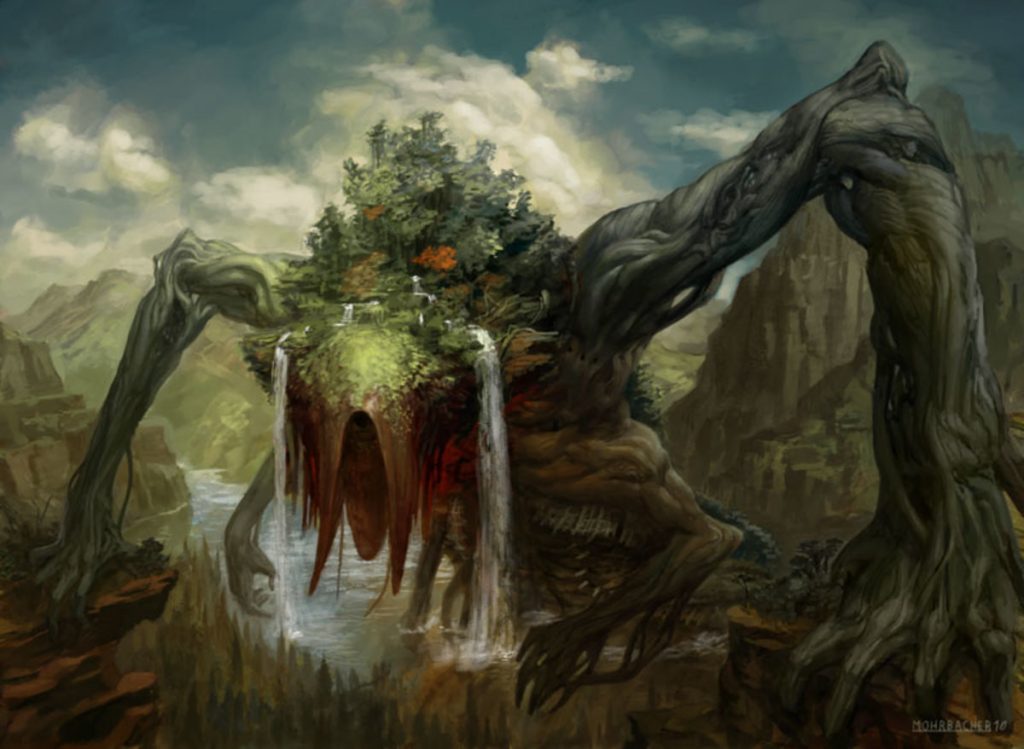
Animar, Soul of Elements | Illustration by Peter Mohrbacher
Commander (1)
Planeswalker (1)
Creature (31)
Alloy Myr
Artisan of Kozilek
Beast Whisperer
Beastcaller Savant
Bloom Hulk
Elvish Mystic
Farhaven Elf
Fierce Empath
Forgotten Ancient
Frilled Mystic
Gyre Sage
Ilysian Caryatid
Incubation Druid
Llanowar Elves
Merfolk Skydiver
Mystic Snake
Primordial Sage
Rattleclaw Mystic
Roalesk, Apex Hybrid
Shaman of the Great Hunt
Silverclad Ferocidons
Solemn Simulacrum
Soul of the Harvest
Stumpsquall Hydra
Surrak Dragonclaw
Ulamog's Crusher
Vesuvan Shapeshifter
Voracious Hydra
Vorel of the Hull Clade
Zegana, Utopian Speaker
Rishkar, Peema Renegade
Instant (8)
Bioshift
Fuel for the Cause
Inspiring Call
Invigorating Surge
Savage Summoning
Solidarity of Heroes
Temur Charm
Trap Essence
Sorcery (7)
Biogenic Upgrade
Contentious Plan
Domri's Ambush
Increasing Savagery
Scale the Heights
Shamanic Revelation
Tezzeret's Gambit
Enchantment (12)
Aqueous Form
Bred for the Hunt
Colossal Majesty
Elemental Bond
Ever-Watching Threshold
Forced Adaptation
Garruk's Uprising
Primal Empathy
Rancor
Rhythm of the Wild
Warstorm Surge
Hardened Scales
Artifact (5)
Arcane Signet
Lifecrafter's Bestiary
Rhonas's Monument
Sol Ring
Swiftfoot Boots
Land (35)
Command Tower
Evolving Wilds
Forest x9
Frontier Bivouac
Island x9
Karn's Bastion
Llanowar Reborn
Mountain x8
Novijen, Heart of Progress
Opal Palace
Oran-Rief, the Vastwood
Skarrg, the Rage Pits
Animar, Soul of Elements is the type of commander that can perform well at various budgets and levels of competitiveness. Having protection from black and white also keeps this commander safe from a lot of the best removal spells.
Since Animar’s ability only gets better the more counters it has, proliferate abilities on cards like Karn's Bastion and Contentious Plan are good ways to add more counters to it. Hardened Scales is especially helpful, as you’ll get two counters for each creature instead of just one.
X creatures like Stumpsquall Hydra and big colorless creatures like Artisan of Kozilek are no-brainers in an Animar deck, as they benefit the most from this commander’s cost reduction.
#5. Krenko, Mob Boss

Krenko, Mob Boss | Illustration by Karl Kopinski
Commander (1)
Creature (50)
Battle Squadron
Beetleback Chief
Bloodcrazed Goblin
Bloodstone Goblin
Boggart Brute
Boggart Forager
Clamor Shaman
Foundry Street Denizen
Frenzied Goblin
Goatnapper
Goblin Arsonist
Goblin Assault Team
Goblin Banneret
Goblin Bird-Grabber
Goblin Champion
Goblin Chieftain
Goblin Cohort
Goblin Cratermaker
Goblin Instigator
Goblin King
Goblin Lookout
Goblin Matron
Goblin Motivator
Goblin Ringleader
Goblin Shortcutter
Goblin Smuggler
Goblin Taskmaster
Goblin Trailblazer
Goblin Trashmaster
Goblin Warchief
Goblin Wardriver
Keldon Overseer
Krenko, Tin Street Kingpin
Krenko's Enforcer
Magmaw
Mogg Flunkies
Mudbutton Clanger
Pashalik Mons
Raging Redcap
Siege-Gang Commander
Skinbrand Goblin
Skirk Prospector
Skirk Shaman
Squee, the Immortal
Subterranean Scout
Teeterpeak Ambusher
Volley Veteran
Weaselback Redcap
Brash Taunter
Emberwilde Augur
Instant (3)
Battle Hymn
Bombard
Brightstone Ritual
Sorcery (9)
Direct Current
Dragon Fodder
Empty the Warrens
Goblin Barrage
Goblin Grenade
Goblin Rally
Goblin War Party
Hordeling Outburst
Krenko's Command
Enchantment (3)
Boggart Shenanigans
Quest for the Goblin Lord
Goblin Bombardment
Land (34)
Mountain x34
While you can certainly make a more powerful Krenko, Mob Boss deck than this one, you really can’t go wrong with just slapping a bunch of low mana value goblins together into a deck. There are also just so many fun and flavorful goblin cards to choose from that it can be a lot of fun just putting a deck like this together by looking for your favorite ones.
Goblins like Goblin Trashmaster and Goblin King are incredibly effective in a Krenko deck because even the smallest buff has a big impact when spread across a lot of tokens. Quest for the Goblin Lord is another good way to buff your tokens.
Cards like Goblin Grenade and Goblin Barrage give you other ways to make use of your tokens besides just attacking with them. Goblin Bombardment can be especially powerful since it costs no mana to activate. If an opponent tries to wipe the field of your goblins, you can just sacrifice them all at instant speed and deal damage to players as you see fit. If your army is big enough, you can even just sacrifice a chunk of it to take that player out while keeping the rest.
#4. Jared Carthalion, True Heir
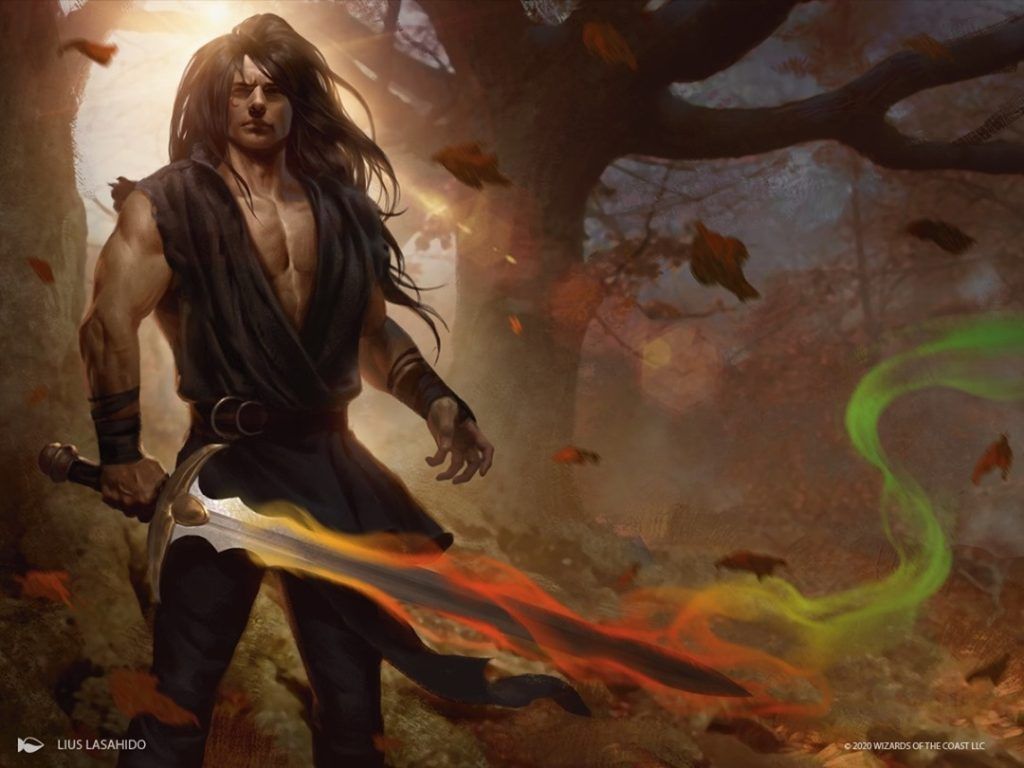
Jared Carthalion, True Heir | Illustration by Lius Lasahido
Commander (1)
Planeswalker (1)
Creature (21)
Archon of Coronation
Boros Reckoner
Brash Taunter
Crimson Fleet Commodore
Dawnglade Regent
Emberwilde Captain
Entourage of Trest
Frenzied Saddlebrute
Fyndhorn Elves
Geode Rager
Hornet Nest
Kediss, Emberclaw Familiar
Palace Jailer
Palace Sentinels
Protector of the Crown
Reclamation Sage
Sakura-Tribe Elder
Silent Arbiter
Staunch Throneguard
Stuffy Doll
Ulvenwald Tracker
Instant (12)
Ancient Animus
Arcbond
Gideon's Sacrifice
Hunter's Insight
Inscription of Abundance
Khalni Ambush
Master Warcraft
Naya Charm
Pit Fight
Soul's Fire
Thrill of Possibility
Titanic Brawl
Sorcery (13)
Blasphemous Act
Chain Reaction
Cultivate
Deafening Clarion
Harmonize
Open the Armory
Primal Might
Rampant Growth
Rip Apart
Search for Tomorrow
Solar Blaze
Thrilling Discovery
Banefire
Enchantment (9)
Benevolent Blessing
Brave the Sands
Court of Bounty
Court of Grace
Court of Ire
Entangler
Guilty Conscience
Lure
Pariah
Artifact (8)
Arcane Signet
Blackblade Reforged
Commander's Sphere
Haunted Cloak
Loxodon Warhammer
Sol Ring
Swiftfoot Boots
Mithril Coat
Land (35)
Boros Garrison
Command Tower
Evolving Wilds
Exotic Orchard
Forest x9
Gruul Turf
Jungle Shrine
Kessig Wolf Run
Krosan Verge
Mountain x6
Myriad Landscape
Plains x6
Rogue's Passage
Rugged Highlands
Selesnya Sanctuary
Terramorphic Expanse
Wind-Scarred Crag
Jared Carthalion, True Heir is a fun budget commander, not just because it performs well, but also because the way it works is a lot of fun. Your goal with this build is to make sure you’re the monarch and then do as much damage to Jared as you possibly can to buff it up.
Board wipes like Blasphemous Act or Solar Blaze that you’d usually run anyway suddenly become ways to both clear out enemy threats while buffing your commander. Similarly, fight cards like Pit Fight won’t just act as removal, but can also help give Jared a significant number of counters as long as you’re the monarch.
Cards like Pariah and Gideon's Sacrifice allow you to redirect damage to Jared, keeping you safe while it continues to get bigger. You can also use cards like Guilty Conscience or Brave the Sands to help buff Jared while also using it as an effective blocker since combat damage won’t finish it off.
A big part of your game plan revolves around staying the monarch, so you’ll need a good defense and offense to maintain it. Entangler allows Jared to block as many oncoming creatures as you want, as long as they don’t have evasion. Meanwhile cards like Loxodon Warhammer and Haunted Cloak can make it easier for you to do combat damage and get the monarch status back if you lose it.
#3. Doran, the Siege Tower

Doran, the Siege Tower | Illustration by Rob Alexander
Commander (1)
Planeswalker (1)
Creature (36)
Abzan Beastmaster
Acid Web Spider
Acidic Slime
Ancient Lumberknot
Arasta of the Endless Web
Axebane Guardian
Carven Caryatid
Catapult Fodder
Centaur Nurturer
Colfenor, the Last Yew
Deadwood Treefolk
Duplicant
Giant Ox
Gorm the Great
Great Oak Guardian
Grizzled Leotau
Humble Naturalist
Kheru Bloodsucker
Llanowar Loamspeaker
Nemata, Primeval Warden
Nyx-Fleece Ram
Oathsworn Giant
Ohran Viper
Sapling of Colfenor
Silklash Spider
Stingerfling Spider
Ulvenwald Observer
Unhallowed Phalanx
Wall of Blossoms
Wall of Omens
Wild-Field Scarecrow
Zetalpa, Primal Dawn
Fangorn, Tree Shepherd
Generous Ent
Timber Protector
Treebeard, Gracious Host
Instant (2)
Refuse to Yield
Return to Nature
Sorcery (13)
Ambition's Cost
Ancient Craving
Bitter Revelation
Cultivate
Dusk / Dawn
Explosive Vegetation
Fell the Mighty
Harmonize
Painful Truths
Peregrination
Rampant Growth
Shamanic Revelation
Vindicate
Enchantment (4)
Assault Formation
Behind the Scenes
Brave the Sands
Stoneskin
Artifact (6)
Abzan Banner
Commander's Sphere
Darksteel Ingot
Indatha Crystal
Letter of Acceptance
Slagwurm Armor
Land (37)
Forest x9
Plains x8
Swamp x7
Access Tunnel
Blossoming Sands
Command Tower
Evolving Wilds
Forbidding Watchtower
Haunted Mire
Krosan Verge
Murmuring Bosk
Path of Ancestry
Rogue's Passage
Sandsteppe Citadel
Sunlit Marsh
Terramorphic Expanse
Doran, the Siege Tower has a simple ability, but one that can easily give you a big advantage. With Doran on the field, you can play a cheap creature like Giant Ox and suddenly have a massive threat early in the game. Doran’s effect also impacts your opponents' creatures, so there may be times when something they’re running will be significantly weakened. For example, Doran makes something like Scoria Elemental a lot worse.
Apart from low-mana-high-toughness creatures, you also have cards like Abzan Beastmaster that gives you other benefits for having the toughest creatures on the field. You also have Catapult Fodder who quickly transforms into Catapult Captain and gives you a way to do some direct damage. While it doesn’t name toughness specifically, a card like Brave the Sands works well with extra tough creatures.
Toughness buffs can also be cheaper than power buffs. For example, Stoneskin is easier to get on a creature than Colossus Hammer, but it has the same effect in this deck thanks to Doran.
This deck is already pretty budget friendly, but there’s also a single card that makes up almost half its price; Timber Protector is worth about $23 at the time of writing. While it’s a good way to keep your commander and several other creatures in this deck safe, if you want to pay only $30 for this deck instead, you know what to cut.
#2. Alela, Artful Provocateur
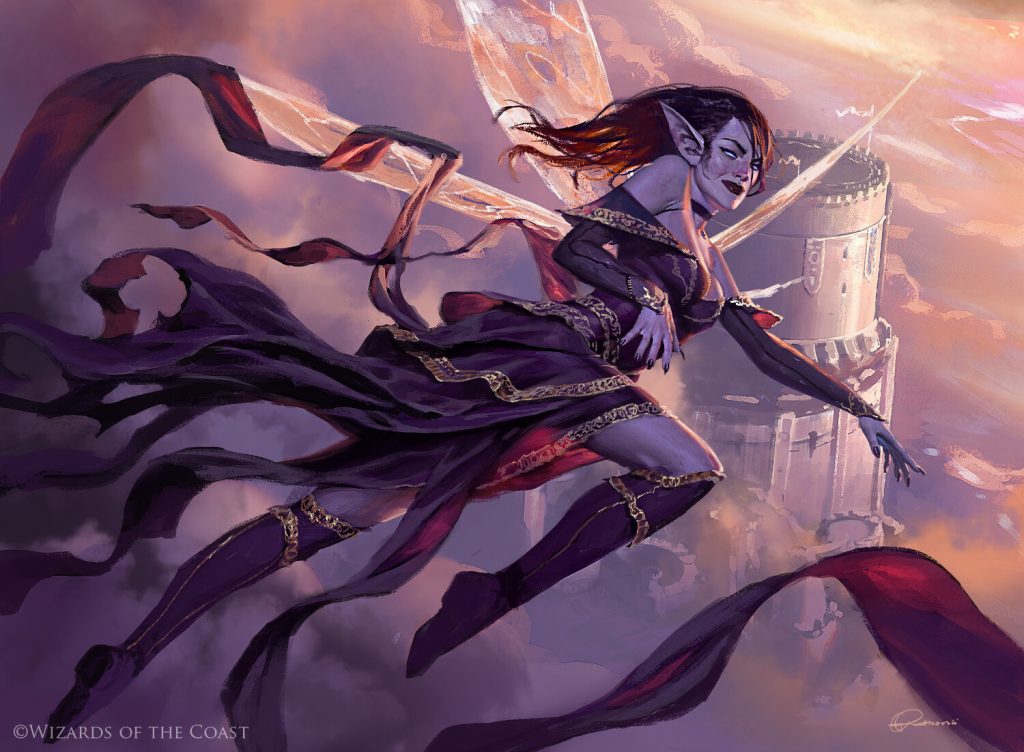
Alela, Artful Provocateur | Illustration by Grzegorz Rutkowski
Commander (1)
Creature (11)
Tide Skimmer
Empyrean Eagle
Hanna, Ship's Navigator
Silver Myr
Gold Myr
Leaden Myr
Archon of Sun's Grace
Archetype of Imagination
Mentor of the Meek
Arcanist's Owl
Sephara, Sky's Blade
Instant (12)
Lofty Denial
Mortify
Counterspell
Dovin's Veto
Unwind
Rootborn Defenses
Rally of Wings
Didn't Say Please
Make a Stand
Negate
Brainstorm
Utter End
Sorcery (6)
Winged Words
Kaya's Wrath
Dance of the Manse
Planar Cleansing
Cleansing Nova
Open the Vaults
Enchantment (20)
All That Glitters
Favorable Winds
Conclave Tribunal
Lawmage's Binding
Intangible Virtue
Etchings of the Chosen
Prison Realm
Ethereal Absolution
Sigil of the Empty Throne
Banishing Light
The Eldest Reborn
Bastion of Remembrance
Pacifism
Mirrodin Besieged
Omen of the Sea
Oblivion Ring
Mirrormade
Corrupted Conscience
Mind Control
Bitterblossom
Artifact (15)
Heraldic Banner
Witching Well
Mace of the Valiant
Executioner's Capsule
Sol Ring
Orzhov Signet
Azorius Signet
Dimir Signet
Commander's Sphere
Glass Casket
Spear of Heliod
Bident of Thassa
Darksteel Ingot
Tormod's Crypt
Soul-Guide Lantern
Land (35)
Command Tower
Evolving Wilds
Terramorphic Expanse
Prairie Stream
Azorius Chancery
Dimir Aqueduct
Orzhov Basilica
Island x9
Plains x7
Swamp x6
Arcane Sanctum
Tranquil Cove
Dismal Backwater
Scoured Barrens
Sunken Hollow
Caves of Koilos
Alela, Artful Provocateur allows you to go wide without actually running that many creatures. Instead, you can focus on casting artifacts and enchantments while also filling your board up with flying tokens. Cards like Favorable Winds and Intangible Virtue help to make your tokens stronger. This, coupled with their natural evasion, can make this deck hard to deal with in casual pods.
You can use Mirrodin Besieged to create even more token creatures when you play artifacts, and Sigil of the Empty Throne does the same with enchantments. Bitterblossom gives you tokens each turn for free. These plus Alela ensure you have a steady stream of creatures on the field.
Cards like All That Glitters and Mace of the Valiant can be pretty effective in this deck, allowing you to buff Alela up and threaten opponents with commander damage. You can also get opponents to open themselves up to your attacks by using Bident of Thassa, allowing you to swing out with all your tokens and do some serious damage.
If you have some extra money to stretch the budget of this deck, you can add Moonshaker Cavalry as a good finisher and still keep the total price under $100. That said, I think this deck still performs pretty well as built.
#1. Jhoira of the Ghitu

Jhoira of the Ghitu | Illustration by Kev Walker
Commander (1)
Creature (39)
Rift Elemental
Sphinx of the Second Sun
Wild-Magic Sorcerer
Timebender
Artisan of Kozilek
Etali, Primal Storm
Jhoira's Timebug
Deep-Sea Kraken
Nezahal, Primal Tide
Desolation Twin
Inkwell Leviathan
Ulamog's Crusher
Stormtide Leviathan
Bearer of the Heavens
Breaker of Armies
Diluvian Primordial
Archetype of Imagination
Charmbreaker Devils
Mercurial Chemister
Meteor Golem
Detritivore
Scholar of the Lost Trove
Tromokratis
Tyrant of Discord
Scourge of Fleets
Akroma, Angel of Fury
Niv-Mizzet, Dracogenius
Tidal Force
Gargadon
Palladium Myr
Brinelin, the Moon Kraken
Dragon Mage
Pathrazer of Ulamog
Arcanis the Omnipotent
Molten Primordial
Ovika, Enigma Goliath
Keeper of Secrets
Niv-Mizzet, the Firemind
Niv-Mizzet, Parun
Instant (14)
Fury Charm
Clockspinning
Timecrafting
Fact or Fiction
Rewind
Unwind
Opportunity
Aetherize
Mental Journey
Creative Outburst
Izzet Charm
Teach by Example
Scour from Existence
Wild Ricochet
Sorcery (7)
All of History, All at Once
Aminatou's Augury
Inspiring Refrain
Elemental Masterpiece
Ravenform
Boon of the Wish-Giver
Mnemonic Deluge
Enchantment (1)
Artifact (5)
Sol Talisman
Mind Stone
Commander's Sphere
God-Pharaoh's Statue
Izzet Locket
Land (33)
Swiftwater Cliffs
Izzet Boilerworks
Command Tower
Evolving Wilds
Izzet Guildgate
Highland Lake
Terramorphic Expanse
Temple of Epiphany
Silverbluff Bridge
Prismari Campus
Mountain x11
Island x11
Myriad Landscape
Jhoira of the Ghitu’s ability to suspend any card gives you a lot of fun options when it comes to deckbuilding. You can essentially slap a bunch of high mana value cards with splashy effects into the deck and watch your opponents’ faces as they realize what’s coming in just a few turns. This Jhoira is unique in that it has a very powerful effect, but it doesn’t need to stay on the field to see it through. As long as you suspend some good cards before Jhoira’s gone, you’ll still be set up pretty nicely.
Some cards like Tyrant of Discord or Tidal Force are difficult to hard cast, and so don’t see as much play, making them cheap. However, thanks to Jhoira it’s a lot easier to get them on the field. While cards like Niv-Mizzet, Parun or Arcanis the Omnipotent might get played more often, it’s still nice to have a way to avoid their restrictive cost and possibly get them out more quickly.
Aside from big creatures, this deck also has some very splashy spells like Aminatou's Augury or Mnemonic Deluge. One with the Multiverse is one of the better cards in this deck, as it gives you a significant advantage each turn and you can cheat it out early with Jhoira.
This deck also has built-in ways to benefit from casting big spells. Ovika, Enigma Goliath can make you quite a few tokens thanks to this deck’s steep mana curve. Wild-Magic Sorcerer gives one of your suspended cards cascade each turn which could easily give you a second massive spell for free.
Commanding Conclusion

Sol Ring | Illustration by Mike Bierek
Arguments about Magic being pay-to-win or the idea of spending thousands on a deck can be very discouraging for newer players looking to pick up the game. It can also make veteran players feel stuck with the decks they already have, afraid of sinking the same amount of money into a new build. It’s always good to keep in mind fun budget options like these that can help you get started in the game or keep it fresh and exciting while not breaking the bank.
Which is your favorite budget commander? Ready to add a little more knowledge and improve your EDH deckbuilding? What’s the least you’ve ever spent on a Commander deck? Do you think precons are also fun budget decks? Let me know in the comments or on Draftsim’s X (formerly Twitter).
Thank you for reading and see you next time!
Follow Draftsim for awesome articles and set updates:
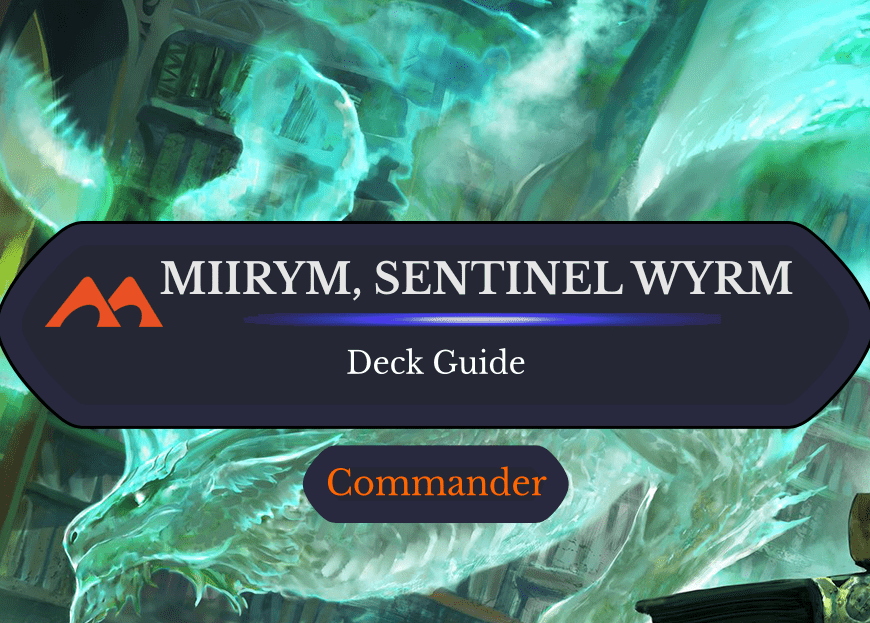
Add Comment